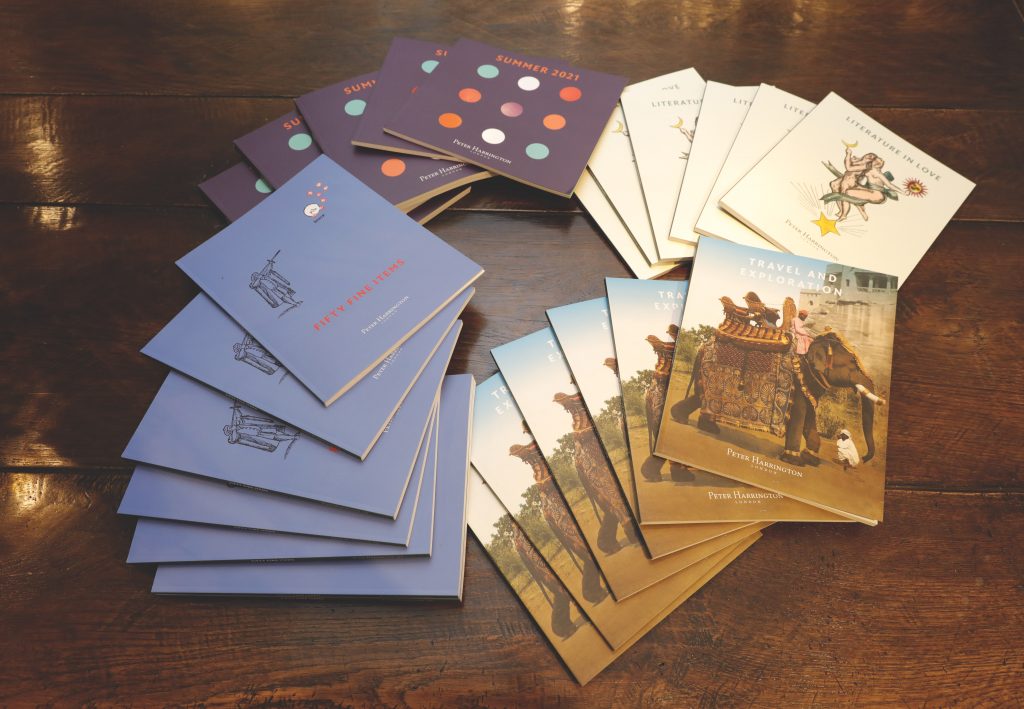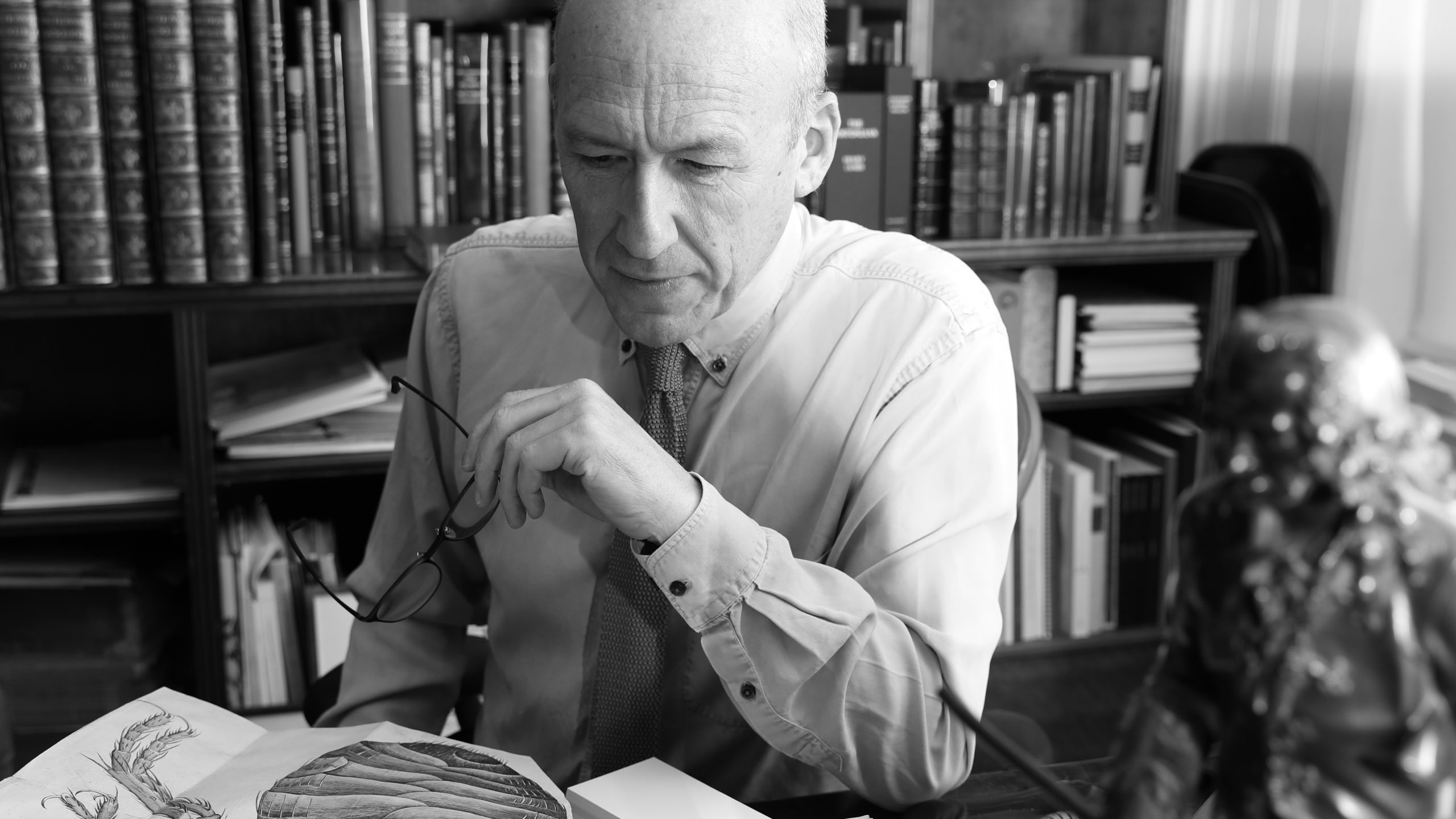Lauren Hepburn talks to Adam Douglas, Head Cataloguer at Peter Harrington about the importance of the book catalogue within the rare books trade.
Tell us more about what you do as Head Cataloguer at Peter Harrington.
I’m in charge of overall standards, making sure that we all write our book descriptions to an agreed set pattern. I don’t want to cramp anyone’s individual style, but customers like to know where to look for the information they need. If one cataloguer mentions the binding in the very first line of the description and another cataloguer leaves it until the last paragraph, it can be confusing.
I trained most of our existing cataloguers, and I wrote the house style manual, which guides our cataloguers on matters great and small, like whether “dust jacket” has a hyphen or not. (It doesn’t.) I also teach cataloguing skills at the annual York Antiquarian Book Seminars.
What is the importance of printed catalogues within the trade?
Traditionally, print catalogues were the main method of distance-selling rare books. A sole dealer might have been able to get by with single offers by letter or telephone, but a book catalogue is more efficient and showed that they were a proper going concern.
Saving books up for a catalogue is a seasonal ritual for most booksellers. Issuing them helps remind customers that the bookseller is still plugging away, even if they don’t want anything from the current offering.
The most prestigious dealers issued lavish catalogues that have become reference works in their own right – grand dealers like Bernard Quaritch, Maggs Bros., Martin Breslauer, H. P. Kraus. All good dealers have shelves of old dealers’ catalogues which help them in their research. It’s my aspiration to keep producing book catalogues for Peter Harrington that live up to those high standards.
What are the main functions and benefits of using print catalogues?
Printed catalogues give the potential buyer time to contemplate the item on offer, read through sometimes lengthy descriptions at their leisure, and consider buying a book, without the time pressure auctioneers rely on to get people to make up their minds. They also get the opportunity to browse through other items they may not otherwise have considered. The internet is brilliant for finding books, but it tends to narrow down the search to only one or two items. A print catalogue is more like browsing the shelves of a well-managed bookshop.
As booksellers who issue catalogues, we have a golden opportunity to show the same kind of taste and judgement that goes into buying our stock. It’s hard to imagine that a bookseller who issues an ugly, badly produced catalogue cares much about the aesthetic appeal of the books they offer for sale.

Have book catalogues evolved over time?
In the past, every dealer worth his or her salt issued a book catalogue, from the flimsiest photocopied list to a massive hardbound book. From the 1980s desktop publishing and cheap colour photography greatly improved the general appearance of booksellers’ catalogues. Nowadays, the influence of digital platforms is beginning to show in the formats of print catalogues. Many innovative dealers are beginning to chafe against the old restrictions and dare to try different layouts and presentations. But rare bookselling and collecting is by definition a refuge for traditionalists – old habits die hard.
What goes into the creation of a Peter Harrington catalogue?
We start with the choice of books, whether it’s going to be a specialist selection or one of our seasonal miscellanies. If it’s a selection, one of our book specialists will be closely involved, choosing the books and arranging their order, as well as writing an introduction. All the books will have been photographed beforehand, but sometimes we might ask Ruth, our photographer, to take additional shots that will suit a particular spread we have in mind.
We then gather the books together and the editorial team reads through the descriptions once more, checking for consistency, accurate condition reports, and any little errors that may have crept in. We also use this time to freshen supporting notes that may have been too frequently used in the past, sometimes rewriting them altogether to suit a new context.
In a collaborative process with our print designer, we then create layouts of the text and images, usually aiming to produce a 100-page catalogue. At that point there is often more photography required; an index is a useful addition, if necessary; then proofreading, more proofreading, another round of proofreading. And then, off to the printers, who usually take two weeks to print, bind, and post them out (which gives us time to spot the errors we’ve missed!)
How do the print and digital spheres interact and collaborate at Peter Harrington?
That’s a fascinating question, and the answer is that they’re still in flux. For several years now we’ve been able to send our catalogues in PDF format, which means that the customer can print the pages themselves, much as they would see them in the physical catalogue, although not so well reproduced. New digital publishing formats mean that we can design much more interesting multimedia digital publications, but there is still some resistance to novelty. Collectors are like cats – they don’t appreciate change.
There is no doubt that digital publication requires a briefer presentation. It’s tough to read long descriptions on a screen. In the digital age catalogue descriptions need to be shorter, snappier, pithier. That’s the challenge – to tighten up our descriptions without sacrificing accuracy and vital information.
Our website offers the same full-length descriptions as our print catalogues, but we present the elements of our descriptions in a slightly different order. It’s a new mise-en-page, a new visual grammar, and we’re still learning how to do it best. The advantage the website has over a printed catalogue is that we can attach as many photographs as necessary to each description and also add 360° videos which allow the customer a much more detailed look at bindings, and give a more accurate picture of the book as a physical object .
What do you think the future of catalogues will be?
Given the fact that the rare books trade is centred on love for and appreciation of the printed book, I think that the printed book catalogue and its digitally formatted first cousin will show a remarkable resilience. If you love old books, you probably love reading booksellers’ catalogues, even if they are occasionally a little fusty and filled with obscure jargon.
The more innovative rare booksellers who produce catalogues are showing ways to create more attractive publications – less stuffy but without sacrificing honest, accurate descriptions.





